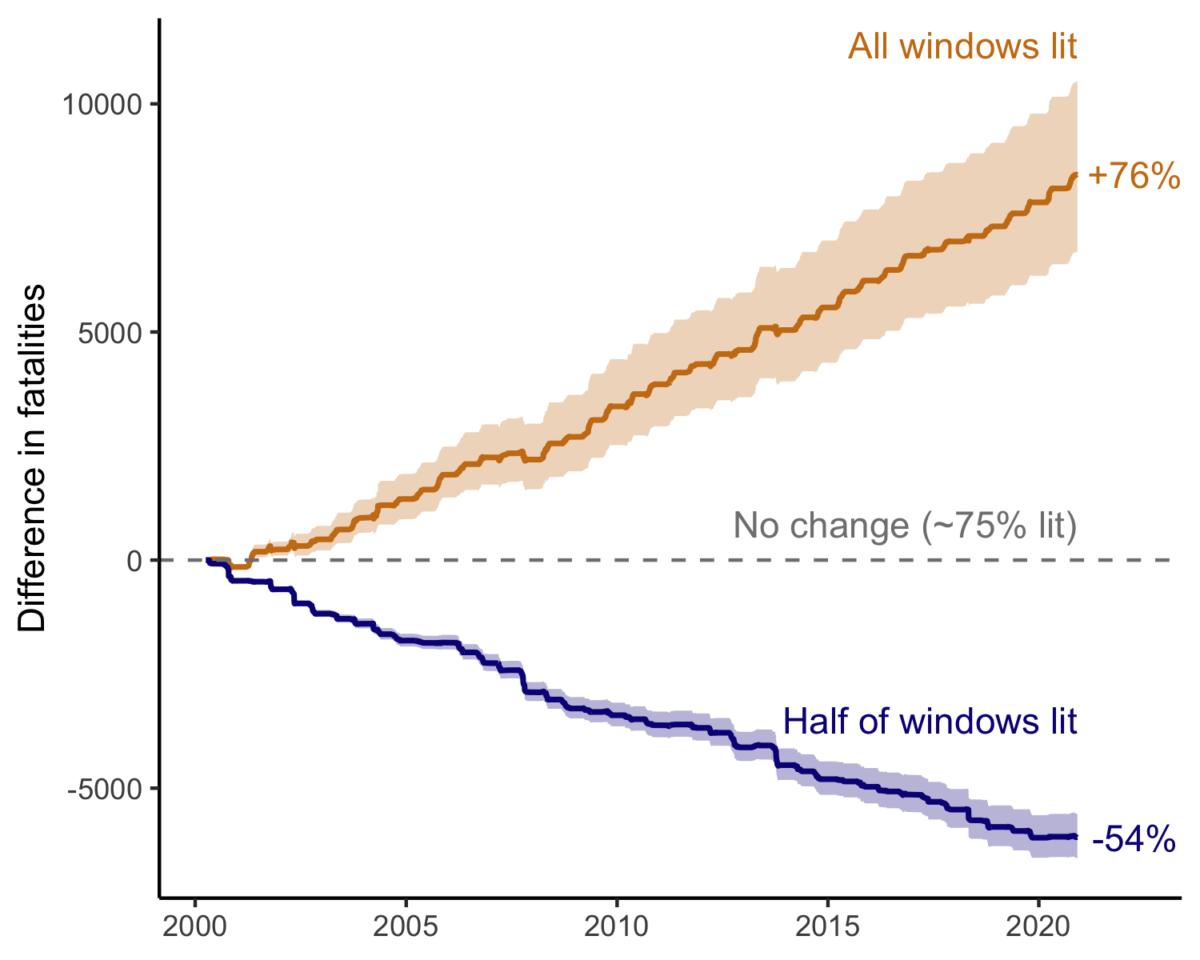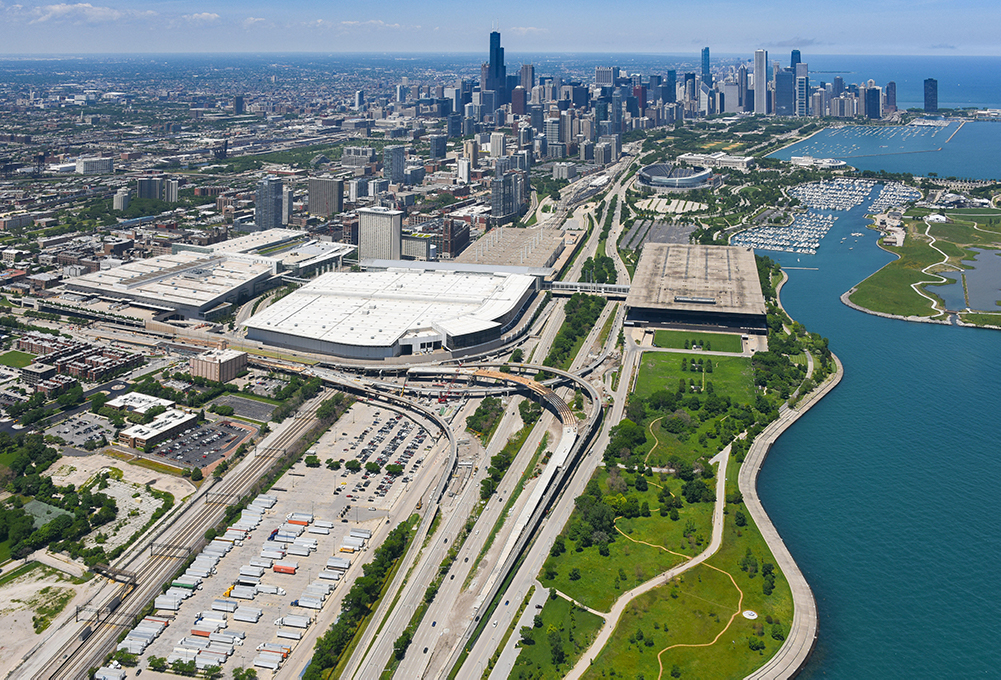
Selection of birds found at McCormick Place, from the scientific collections of the Field Museum. Image courtesy of Karen Bean, Field Museum.
The BirdCast team led a study published today in PNAS that uses two decades of data to show that migration magnitude, light output, and wind conditions are important predictors of collisions at a high-profile building in Chicago. This research has global implications for conservation action campaigns aimed at eliminating an important cause of bird mortality: light pollution and resulting collisions with structures.
Collisions kill hundreds of millions of birds annually in North America alone. Nocturnally migrating birds are attracted to light, making light pollution an important risk factor, and there is growing interest in mitigating the impacts of light to protect migrating birds. Over the course of 21 years, the McCormick Place convention center sustained 11 times fewer nighttime bird collisions during spring migration and 6 times fewer collisions during fall migration when only half of its windows were illuminated, compared to when all windows were lit.
The factors that had the strongest effect on bird collisions were the intensity of migration (more birds migrating = more collisions), the wind direction (westerly winds = more collisions), and area of illuminated windows (more surface area lit = more collisions). We estimated that if half of the building’s windows had been darkened during peak migration periods, bird kills would have been reduced by over 50% over the past two decades.

Moderately decreasing lighting could have led to more than a 50% reduction in bird fatalities. On the other hand, if the building had been fully lit, deaths may have been over 75% higher.
Building strikes kill hundreds of millions of birds a year, and many of these occur at night and during the migration seasons, when hundreds of species of songbirds are moving across the hemisphere under the cover of darkness. In response, a growing number of “lights out” initiatives and green building guidelines call for reductions in lighting to aid migrating birds. Lights Out Chicago is among the oldest of over 40 initiatives across North America and brings together building managers, local conservation organizations, city staff, and scientists at the Field Museum. The results of the study strengthen the science behind lights out programs by showing that darkening windows can directly reduce bird mortality.
Previous studies have shown that lights from city buildings, installations and events can attract and disorient migrating birds, shifting migration routes toward urban areas. Our 2019 study showed Chicago is the highest-ranked U.S. city for light pollution exposure risk to night-migrating birds; as many as 100 million birds pass through the greater Chicago area in the spring, and over 150 million in the fall.

Aerial image of McCormick Place, the location of the study. Image courtesy of Curtis Waltz, Aerialscapes.




